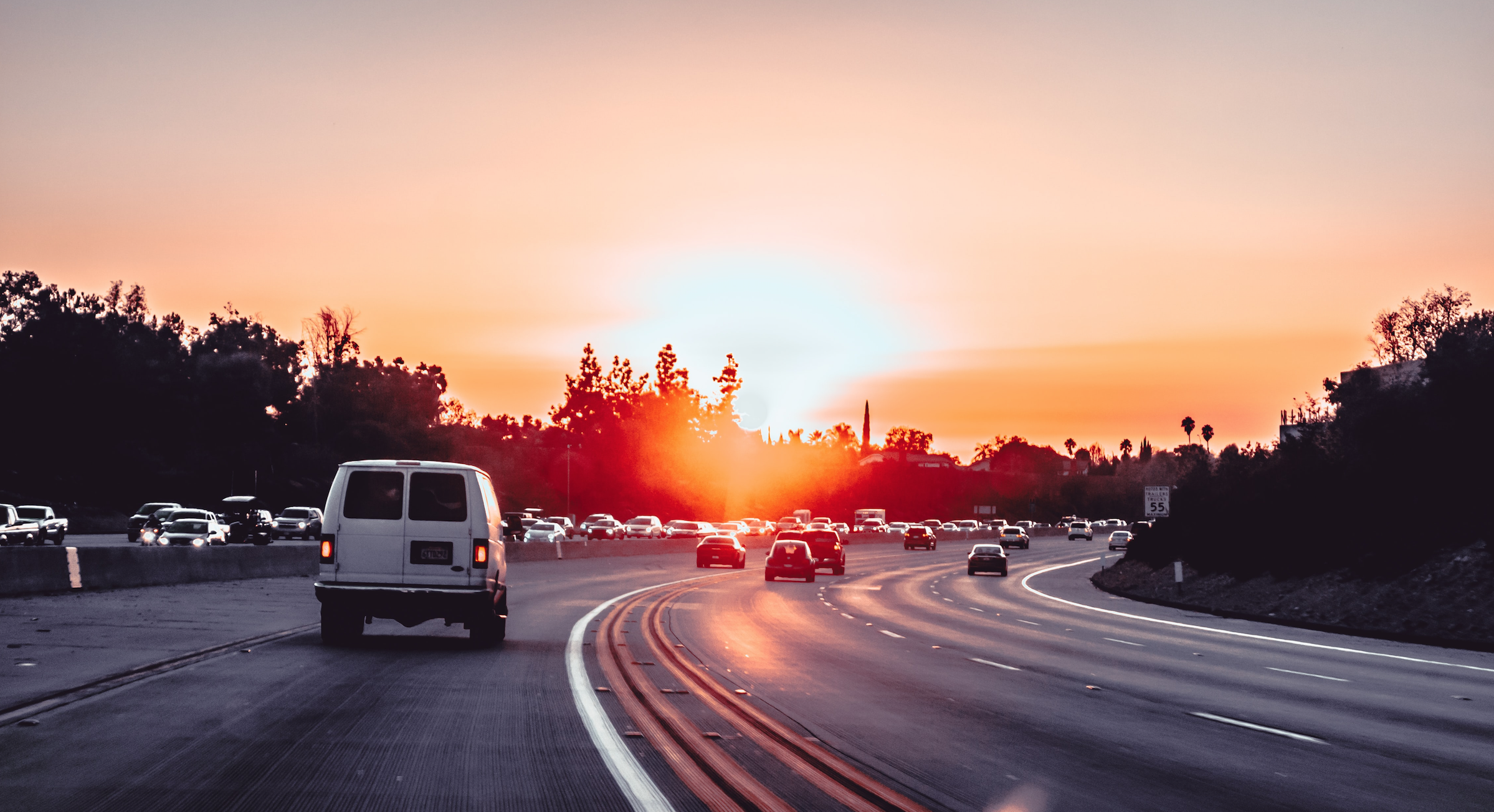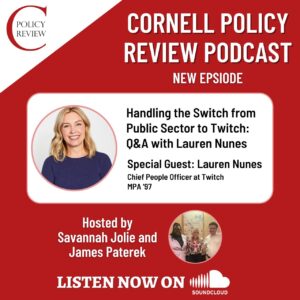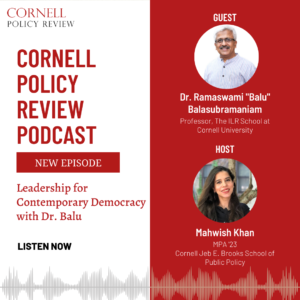
Source: Unsplash | Xan Griffin
Written by Charlie Mann
Edited by Tiffany Agard
Cars of the Not-So-Distant Future
Eighty years ago, the first vision of a society based on autonomous cars was presented to the public. In the 1939 New York World’s Fair, General Motors (GM) displayed their Futurama.¹ The concepts they presented included autonomous driving in which the vehicle was equipped with radio controls that would help maintain spacing as well as with electrical conductors embedded within highways to keep the car on the track.²´ ³ The concepts intended to idealize 1960 are finally being implemented today.
The actual development of this technology is not to fulfill GM’s ideas of the future; rather, it is needed to improve traffic safety. Ever since automobiles first became widespread in the 1910s with the Model T, the death rate from car accidents has consistently decreased over time. These trends began in 1975 when the crash test system was first implemented. As seen in the graph, the total number of collisions has only seen minor decreases while the death rate has decreased substantially, plateauing for the last decade. As auto deaths are primarily driven by user error, policymakers have used strategies to minimize the damage and resulting fatalities by mandating increased safety features, such as anti-lock braking systems and seat belts. These features have reduced fatality rates. Now, the effectiveness of mechanical safety features available in cars has stagnated. 
Currently, 93% of car accidents are caused by errors in user judgment or control.⁴ To prevent accidents from happening in the first place, manufacturers are implementing advanced driver assistance (ADA) systems to take control away from the driver. The features of these include collision sensors, automatic braking, cruise control, and lane-position maintenance systems.⁵ The next step of advanced driver assistance does not involve any driver input whatsoever––autonomous vehicles (AVs).
Industry Leaders
Two firms are currently leading the development of AVs: Tesla and Google. Tesla has taken an active and eager approach by releasing level 2 autonomy to consumers through their product called “Autopilot,” where the driver has primary control of the vehicle while automating speed, lane centering, and lane change. Google, on the other hand, has been developing its technology privately through its project titled “Waymo.”⁶ Under the supervision of their mechanics and with state issued permits, Google has been testing level 4 autonomy which doesn’t require a driver at all.
Tesla’s Autopilot and Google’s Waymo have faced different levels of response from the public. While Tesla has logged more than 150 million miles of autopilot testing, they have been involved in a few high profile deaths of users driving in autopilot. Most notably, a former Navy SEAL died in Florida in 2016 due to a flaw in the cameras’ ability to see white vehicles in direct sunlight. The collision was complicated by allegations of the user watching movies on the built-in screen instead of paying attention to the road.⁷ Google’s philosophy has been very different. While Tesla has been learning as it goes, Waymo, due to its more advanced level of automation, has been testing exclusively under direct supervision and has only accumulated 1.5 million miles of test driving. Nonetheless, Google has had collisions of their own which, according to state reports, were the fault of other drivers.⁸
The policy implications of Google and Tesla have not been dealt with on a nationwide scale. Although the National Highway Traffic Safety Administration updates its legislative guidelines on a periodic basis, AV legislation is left up to the states. For instance, three years after the death of the Tesla driver in Florida, Florida state allowed autonomous vehicles to operate without a driver in the car and assigned liability of accidents to the manufacturer.⁹ California, on the other hand, requires all testing of vehicles without manual controls to be carried out in specifically designated areas and with maximum speeds.
Improved Safety and State-Line Standards
One of the goals of autonomous vehicles is to reduce the annual number of car accidents. Since nine out of ten car accidents are caused by an error on the part of the user, self-driving cars should theoretically prevent all of these accidents. However, the increased visibility and development of driverless cars have not been met with the same fanfare that auto manufacturers expected. A total lack of control over vehicles has been perceived by the public as frightening. Despite estimated safety ratings that are impossibly higher than manual automobiles, fear of the uncontrollable is more powerful than the controlled.
The fear of autonomous cars is not without reason, as there exist several implementation problems that undermine the practical use of this technology. First, there are several regulatory barriers across states that would impede a nationwide rollout of autonomous vehicle technology. Since the responsibility of traffic laws is yielded to the states, the legal minutiae regarding following distances, maximum speeds, and distracted driving laws differ widely from state to state. In New Jersey, drivers must honk their horn when passing, while neighboring Pennsylvania forbids vehicles from honking their horns when passing. Which laws should autonomous cars follow and how will they stay informed of the continuously shifting traffic restrictions from state to state or even from city to city? Nationwide legislative efforts are likely to overlook these details of state traffic laws.¹⁰
Where do Liabilities Lie?
If autonomous cars do violate laws or get into accidents, who is liable? Under current tort law, the operator of a manual vehicle is responsible. However, AVs do not have a manual operator. The CEO of Volvo, Hikan Samuelsson, believes that auto companies should accept full responsibility for accidents and violations.¹¹ How liability is assigned could have serious implications for the industry. If too much is assigned to manufacturers, innovation in this emerging industry could be stifled.¹² Too much liability on the part of the driver could deter sales which could have the same harmful effect. Overall, the entire legal and tort framework will need to be modified to account for the shift away from driver-operated vehicles.
One potential method to address the question of liability is to delegate the decisions to insurance companies. Since driverless cars don’t require an individual to operate, human error is minimized, and measurements to determine an individual’s risk will become immeasurable. Car insurance, however, is unlikely to disappear.¹³ Some economists estimate a reduction in insurance premiums that could be as high as 80 percent.¹⁴ The remaining accidents that do occur, however, are expected to be the most severe and incur the most damage.
Another idea of responsibility relates to the decisions the car must make in an emergency situation. In the event of an unpreventable crash, should the car’s responsibility align with its owner or with society? Some claim AVs should minimize lives lost; however, few people would want to ride in a car that is programmed to self-destruct to save other people. The ethical dilemmas of autonomous decision making must be taken into account by manufacturers, consumers, and legislators before a nationwide rollout is possible.
The Future
Most recently, the COVID-19 outbreak has given a platform for autonomous vehicles to show the public their potential for transportation, manufacturing, and delivery. Companies like Uber and Lyft have already been researching, developing, and building their own fleets of autonomous vehicles. As the fate of the virus is unknown, the implementation of autonomous vehicles is necessary for these firms to operate. For the manufacturing and delivery industries, a rollout of AVs has been in progress but now could be more important than ever. In Arizona, a company called Nuro has been contactlessly delivering groceries using AVs.¹⁵ The COVID-19 pandemic is likely to act as a catalyst for the widespread advent of autonomous vehicles as the transportation and manufacturing industries look for ways to continue their operations without worrying about the spread of the virus to or from employees. This is likely to have negative ramifications for employees of these industries as the economy enters this time of technological transition.
Despite the logistical issues associated with the widespread advent of autonomous vehicles, the benefits to society are large, especially during this time of a global pandemic. According to the National Highway Traffic Safety Association, collision and fatality rates could be reduced by up to 90 percent, equating to $594 billion in lost life and quality adjusted life years.¹⁶ The time savings from the reduction of traffic buildups and congestion from AV’s automatic speed regulation could reduce lost time in standstill traffic by 38 hours per commuter per year and could equate to gas savings from traffic congestion valued at $121 billion.¹⁷ It is possible that driverless cars will eventually make up most of the American fleet like in GM’s 1939 prediction; the time frame, however, is uncertain due to the apparent and unavoidable legal, tort, and ethical issues associated with autonomous vehicles.
Footnotes:
1. Kalan, Elliott. “The Original Futurama: The Legacy of the 1939 World’s Fair.” Popular Mechanics. Popular Mechanics, February 15, 2018. https://www.popularmechanics.com/technology/design/a5322/4345790/.
2. Baker, Chris. “April 30, 1939: The Future Arrives at New York World’s Fair.” Wired, April 30, 2010. https://www.wired.com/2010/04/0430new-york-worlds-fair-opens/.
3. Trimble, Bishop, Morgan, and Blanco. “Human Factors Evaluation of Level 2 and Level 3 Automated Driving Concepts: Past Research, State of Automation Technology, and Emerging System Concepts.” National Highway Traffic Safety Administration. US Department of Transportation, July 2014. https://www.nhtsa.gov/sites/nhtsa.dot.gov/files/812043_hf-evaluationlevel2andlevel3automateddrivingconceptsv2.pdf.
4. Fagnant, Daniel J., and Kara Kockelman. “Preparing a Nation for Autonomous Vehicles: Opportunities, Barrier, and Policy Recommendations.” Transportation Research Part A: Policy and Practice. Pergamon, May 15, 2015. https://www.sciencedirect.com/science/article/pii/S0965856415000804.
5. van Arem, B, Cornelle van Driel, and Ruben Visser. “The Impact of Cooperative Adaptive Cruise Control on Traffic-Flow Characteristics.” IEEE Transactions on Intelligent Transportation Systems, January 2007. https://www.researchgate.net/profile/B_Arem/publication/3427981_The_Impact_of_Cooperative_Adaptive_Cruise_Control_on_Traffic-Flow_Characteristics/links/0046351937df049d4f000000/The-Impact-of-Cooperative-Adaptive-Cruise-Control-on-Traffic-Flow-Characteristics.pdf.
6. Lien, Tracey. “Tesla, Google Take Different Roads in Autonomous Vehicle Quest.” The Seattle Times. The Seattle Times Company, July 9, 2016. https://www.seattletimes.com/business/technology/tesla-google-take-different-roads-in-autonomous-vehicle-quest/.
7. Lowy, Joan, and Tom Krisher. “Tesla Driver Killed in Crash While Using Car’s ‘Autopilot’.” The Seattle Times. The Seattle Times Company, July 1, 2016. https://www.seattletimes.com/business/self-driving-car-driver-died-after-crash-in-florida-a-first/.
8. Lien, Tracey. “Tesla, Google Take Different Roads in Autonomous Vehicle Quest.” The Seattle Times. The Seattle Times Company, July 9, 2016. https://www.seattletimes.com/business/technology/tesla-google-take-different-roads-in-autonomous-vehicle-quest/.
9. Florida State Legislature. “2019 Florida Statute Title XXIII Chapter 316.” Online Sunshine. Florida State Legislature, 2019. http://www.leg.state.fl.us/statutes/index.cfm?App_mode=Display_Statute&Search_String=&URL=0300-0399/0316/Sections/0316.003.html.
10. Brodsky, Jessica. “Autonomous Vehicle Regulation: How an Uncertain Legal Landscape May Hit the Brakes on Self-Driving Cars.” Hein Online. Berkeley Technology Law Journal, 2016. https://heinonline.org/HOL/Page?collection=journals&handle=hein.journals/berktech31&type=Text&id=875.
11. “Who Is Responsible for a Driverless Car Accident?” BBC News. BBC, October 8, 2015. https://www.bbc.com/news/technology-34475031.
12. Brodsky, Jessica. “Autonomous Vehicle Regulation: How an Uncertain Legal Landscape May Hit the Brakes on Self-Driving Cars.” Hein Online. Berkeley Technology Law Journal, 2016. https://heinonline.org/HOL/Page?collection=journals&handle=hein.journals/berktech31&type=Text&id=875.
13. Fagnant, Daniel J., and Kara Kockelman. “Preparing a Nation for Autonomous Vehicles: Opportunities, Barriers and Policy Recommendations.” Transportation Research Part A: Policy and Practice. Pergamon, May 15, 2015. https://www.sciencedirect.com/science/article/pii/S0965856415000804.
14. Huckstep, Rick. “Four Ways Autonomous Vehicles Will Change Auto Insurance.” The Digital Insurer, March 20, 2018. https://www.the-digital-insurer.com/blog/insurtech-impact-autonomous-vehicles-auto-insurance/.
15. Szymkowski, Sean. “Coronavirus Highlights Strengths of Self-Driving Delivery Vehicles.” Roadshow by CNET. CNET, March 19, 2020. https://www.cnet.com/roadshow/news/coronavirus-self-driving-delivery-vehicles-china/.
16. Blincoe, L. J., Miller, T. R., Zaloshnja, E., & Lawrence, B. A. (2015, May). The economic and societal impact of motor vehicle crashes, 2010. (Revised) (Report No. DOT HS 812 013). Washington, DC: National Highway Traffic Safety Administration.
17. Werbach, Adam. “The American Commuter Spends 38 Hours a Year Stuck in Traffic.” The Atlantic. Atlantic Media Company, July 17, 2013. https://www.theatlantic.com/business/archive/2013/02/the-american-commuter-spends-38-hours-a-year-stuck-in-traffic/272905/.





